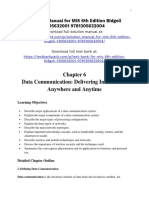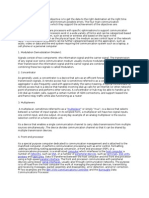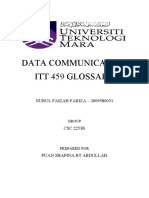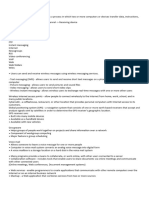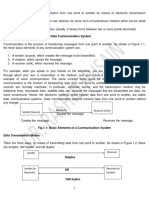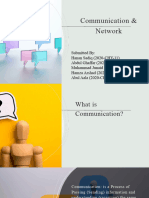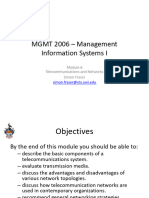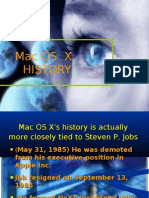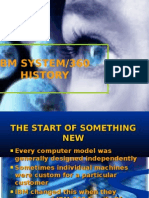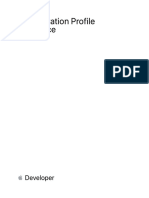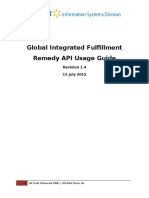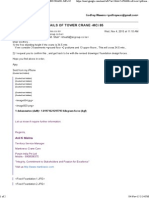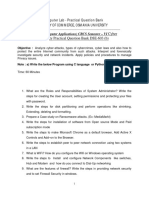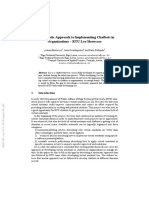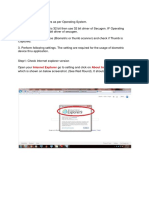0% found this document useful (0 votes)
269 views16 pagesTeleprocessing (Network Structures)
This document discusses teleprocessing and summarizes different types of teleprocessing applications like data collection, message switching, remote job processing, time sharing, online problem solving, and inquiry/transaction processing. It also describes message control programs that control transmission between applications and remote terminals, including the Queued Telecommunications Access Method (QTAM), Telecommunications Access Method (TCAM), and Basic Telecommunications Access Method (BTAM). Finally, it discusses message processing programs that respond to messages received from remote terminals.
Uploaded by
api-3700456Copyright
© Attribution Non-Commercial (BY-NC)
We take content rights seriously. If you suspect this is your content, claim it here.
Available Formats
Download as PPT, PDF, TXT or read online on Scribd
0% found this document useful (0 votes)
269 views16 pagesTeleprocessing (Network Structures)
This document discusses teleprocessing and summarizes different types of teleprocessing applications like data collection, message switching, remote job processing, time sharing, online problem solving, and inquiry/transaction processing. It also describes message control programs that control transmission between applications and remote terminals, including the Queued Telecommunications Access Method (QTAM), Telecommunications Access Method (TCAM), and Basic Telecommunications Access Method (BTAM). Finally, it discusses message processing programs that respond to messages received from remote terminals.
Uploaded by
api-3700456Copyright
© Attribution Non-Commercial (BY-NC)
We take content rights seriously. If you suspect this is your content, claim it here.
Available Formats
Download as PPT, PDF, TXT or read online on Scribd
/ 16






